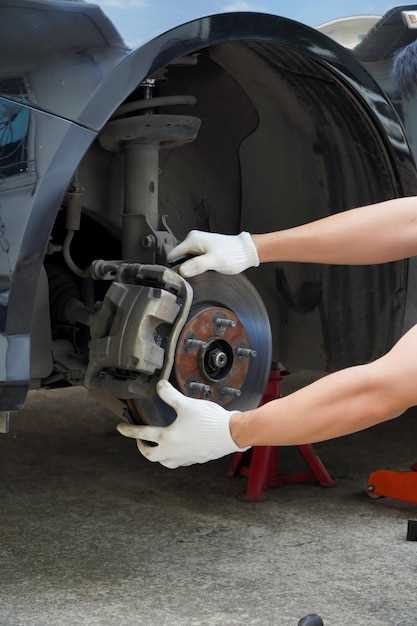
Regular inspection of your stopping components can significantly enhance driving safety. Look for visual signs such as uneven surfaces, scoring, or reduced thickness in the materials. A minimum thickness requirement is often specified by manufacturers; adhering to these guidelines helps maintain functionality.
Listen for unusual sounds like squeaking or grinding, which may indicate a need for immediate attention. Vibrations while braking can also hint at underlying issues, necessitating further examination. Specifically, check the maintenance schedule recommended by vehicle manufacturers to ensure you’re not overlooking necessary checks.
By understanding the limits of your stopping components, you can act promptly, ensuring your vehicle remains reliable. Regular maintenance not only preserves the integrity of essential components but also contributes to an overall safer driving experience.
How to Recognize Warning Signs of Worn-Out Brake Pads
Listen for squeaking or squealing noises when engaging the stopping mechanism; this often indicates insufficient material left for safe operation. Additionally, if a grinding sound is present, this signals critical erosion, requiring immediate action.
Monitor the response upon pressing the pedal. A spongy or soft feel may hint at a need for immediate inspection, suggesting degradation or low brake fluid levels, possibly linked to deteriorating components.
Check for vibrations or pulsations through the steering wheel during braking. This can indicate an uneven surface, typically caused by excessive erosion of the friction material.
Examine the thickness of the friction material regularly. If it appears less than 1/4 inch, it’s prudent to schedule a replacement. Additionally, inspect for signs of discoloration, which can result from overheating and show that replacement is necessary.
Pay attention to the dashboard warning lights. An illuminated indicator may signify pressure issues related to wear and should be investigated promptly.
Look out for uneven wear patterns on the wheels; if one side shows more material loss, it may indicate alignment or suspension concerns that need to be addressed for safe driving.
Tools and Techniques for Checking Brake Pad Thickness

Utilize a caliper to measure the thickness of the friction material on your braking components accurately. Place the tool directly against the material; readings under 3 mm indicate a need for replacement.
A depth gauge can also be employed, providing precise measurements of wear. This tool is especially useful in tight spaces where a caliper might be cumbersome.
Visual inspection remains a valuable method. Look for indicators such as grooves or uneven surfaces. If the thickness approaches the backing plate, consider this a signal for action.
Some vehicles are equipped with wear indicators that emit a squealing sound when the material is thin. Familiarize yourself with the symptoms of such alerts.
Regular inspections should be scheduled, ideally every 6,000 to 10,000 miles, or during routine maintenance checks. Consistency in monitoring can prevent unexpected performance issues.
Document your findings on thickness over time to track degradation, aiding in planning maintenance ahead of emergencies.
When to Seek Professional Help for Brake Pad Issues

If you hear a high-pitched squeaking or grinding sound while driving, it’s time to consult a mechanic. These noises often indicate significant degradation of the components, which can lead to further damage if not addressed.
A noticeable decrease in stopping power is another warning sign. If your vehicle takes longer to halt or the pedal feels unusually soft, seek professional assessment. This condition could suggest excessive deterioration or malfunction of the friction materials.
Inspect your components visually; if you see less than a quarter inch of material left, contact a repair service. Regular checks can help keep you informed about the condition of these critical components.
If you notice vibrations or a pulling sensation while braking, these issues may arise from unevenly worn materials, signaling a need for immediate attention from a qualified technician.
Foul odors coming from the wheels while braking can indicate overheating, a sign of severe problems that require expert analysis. Ignoring burning smells can lead to catastrophic failure.
Schedule a visit if you experience any dashboard warning lights related to the braking system. These alerts often signify underlying issues that need professional diagnosis.
